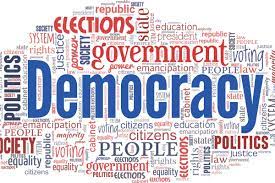This guest post by John Bew and Martyn Frampton is cross-posted from the Reuters blog
One of the current fashions in British and American diplomatic circles is the idea that it is necessary to engage with our enemies, no matter how extreme they might seem. To give but one example, in response to the recent Iranian election results (and prior to the surge of protests there), Steven Clemons of the New America Foundation – a think tank with strong links to the Obama administration – suggested that “nothing at all has changed in the equation that Obama set out during the campaign: we have to deal with our enemies – we must engage”.
Equally, many observers now suggest that the same logic should be applied to non-state actors including Hamas, Hezbollah and even “moderate” Taliban in Afghanistan. Earlier this year, the British Foreign Office reanimated contacts with Hezbollah and several senior British MPs invited Hamas to participate in a video-link discussion in Westminster.
On June 17, we will discuss some of these issues in a lunchtime event run by the Henry Jackson Society in the Houses of Parliament. As we point out in our book, Talking to Terrorists, this belief in the need to “engage with the extremes” often takes the example of Northern Ireland as an inspiration, where the Irish Republican Army (IRA) ended a thirty-campaign of violence in the late 1990s.
The assumption here is that the British government took the brave decision to talk to those who were committing terrorist violence and therefore managed to bring them within the fold of the eventual political settlement. Thus, yesterday’s gunmen became today’s politicians; so the story goes.
Yet this version of history does not accurately reflect what really happened in Northern Ireland. First, the British state had tried to talk to the IRA at various intervals throughout the conflict, starting as early as 1972. At various points, this encouraged the terrorists that momentum was on their side and coincided with a surge in expectations and in violence.
Second “hard power” also played a crucial role: the IRA only came to the negotiating table after a successful campaign of intelligence and policing forced them to recognise that their military campaign was failing. They achieved barely any of the aims they had set themselves and were arguably further from success than they had been thirty years before. As its star seemingly rises, does anyone expect Hamas to sue for peace with such lowered expectations?
The Spanish government’s recent success against the Basque separatist terrorists of ETA provides an interesting contrast to the idea that talking to terrorists is a pre-requisite for peace. For years, the Spanish government tried talks with ETA but these never yielded a political breakthrough. More recently, however, the new strategy has been to asphyxiate ETA through proscription of its political wing, arrests of suspected high profile ETA members, and successful prosecution through the courts. For the Spanish at least, it would seem the notion of it being “good to talk” – in any and all circumstances – has proven to be an illusion.
Ultimately, then, there is a crucial difference in talking to terrorists who are on the crest of a wave and believe they have momentum on their side and talking to those who have been made to realise – by hard power as well as a soft power – that their aims are unattainable through violence.
The message of our book is not to reject the idea of talking to terrorists outright. But it is to provide a reminder that it is unlikely to provide a magic solution and it can run the risk of making the situation immeasurably worse. The US and the UK are likely to travel further down this road in the near future; they should take care to proceed with extreme caution.
In the meantime, it is clear that this debate will run and run. To this end, we have also launched a blog to track the contours of what may well be the defining foreign policy issue of the coming years. From the Middle East to South America, from Western Europe to Southeast Asia, the problems remain the same: with whom do we talk? How? And to what end? It is on these questions that the “engagement debate” turns.


